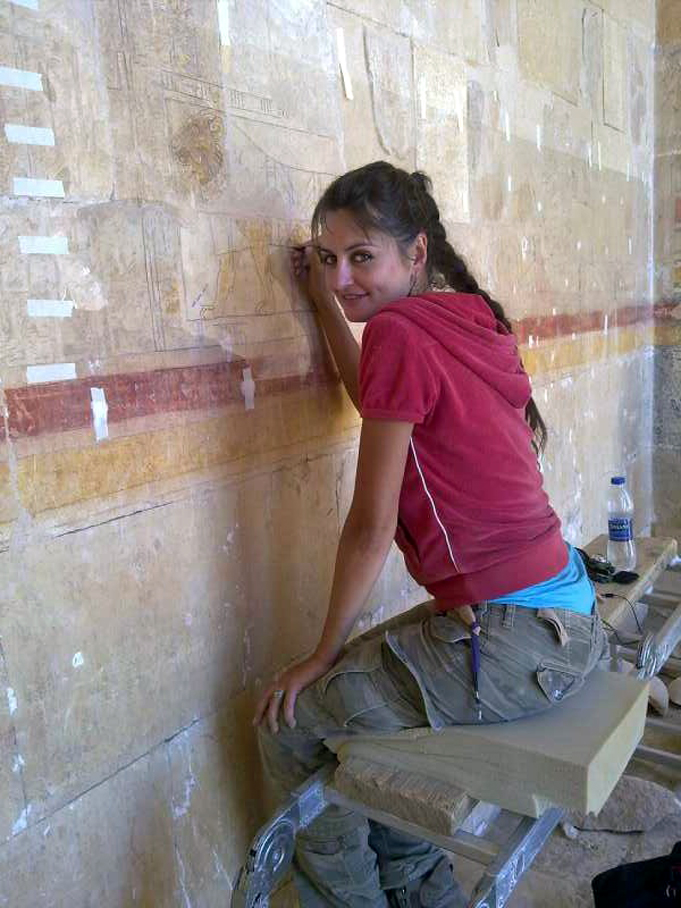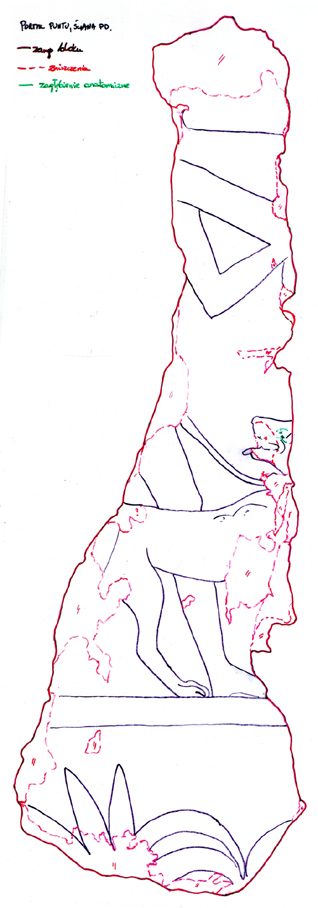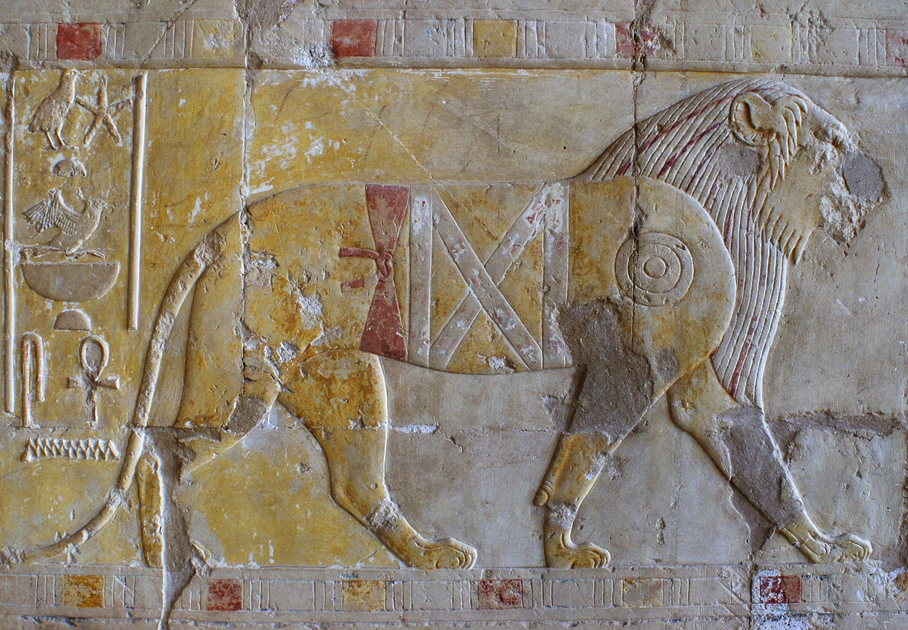News
Mammals of the Temple of Hatshepsut
 The Hatshepsut mortuary complex reveals the depictions of animals of native Egyptian origin, as well as those from other regions of the world.
The Hatshepsut mortuary complex reveals the depictions of animals of native Egyptian origin, as well as those from other regions of the world.
The subject of this research project is the iconography of the above mentioned animals, currently limited to the mammals, in their realistic, full-animal shape, as well as raw materials of mammal origin. The Project, pioneering in terms of mammals, was launched in the season of 2011/2012 and has become the initial element of a PhD thesis in preparation.
The basic stage of the research is drawing (tracing) and photographic documentation of the scenes and fragments representing the animals in particular contexts. In further processing of the material, the project comprises of such components as Egyptological and zooarchaeological analysis, as well as zoological, zoogeographical and behavioral study.
The general aim of the project is to define the different species of the animals depicted in the complex, their origin, role and significance, as well as further employment by the queen and her environment. The same applies to the raw materials such as ivory or pelts. The analysis of iconography, species and zoogeography issues may appear helpful as well, for example in the research of the location of the land of Punt together with the wider range of work related to the PhD thesis preparation. Furthermore the opportunity to recognize the routes of animal transport and their changes in time and species assemblage may be presented as well. It may also contribute some clues as to whether Punt was just a stop on the way from deeper Africa, or the direct spot of the imported animals’ origin. In some range, the results of the research regarding mammals may be helpful in the study of objects and materials imported and exported to and from Egypt.
 Another aim of the Project is to recognize the iconographical patterns and analogies from the times before and after the reign of Hatshepsut. This will be essential to the identification of references and innovations in the queen’s iconographic program, within the studied topic.
Another aim of the Project is to recognize the iconographical patterns and analogies from the times before and after the reign of Hatshepsut. This will be essential to the identification of references and innovations in the queen’s iconographic program, within the studied topic.
Hitherto two zoological families have been completely documented: canids and felids, and from the material further studies have been launched. It has been revealed that the temple hides surprisingly many examples of the above mentioned in the representation of: large wild cats, dogs and even foxes. Documentation of two other groups has been initiated as well: giraffes and monkeys, which however still do not cover all the species represented in the complex. The animals may be presented in their natural environment, while being imported or during their final activities in Egypt. It is an extraordinary sequence, shedding some light to the process of import itself, but also starting a further discussion on the issue of why particular species were chosen to be brought into Egypt.
 Two articles on the topic of mammals of the Hatshepsut temple are currently in preparation. The drawing documentation has served as the illustration for several conference presentations regarding the wider subject of animals. In a couple of months the temple material will be the basis for “Dogs Imported into Pharaonic Egypt”, a paper presented at ICAZ 2014 conference in Argentina. The final result of the Project will be the publication under preliminary title “The Mammals of Hatshepsut Temple in Deir el-Bahari”.
Two articles on the topic of mammals of the Hatshepsut temple are currently in preparation. The drawing documentation has served as the illustration for several conference presentations regarding the wider subject of animals. In a couple of months the temple material will be the basis for “Dogs Imported into Pharaonic Egypt”, a paper presented at ICAZ 2014 conference in Argentina. The final result of the Project will be the publication under preliminary title “The Mammals of Hatshepsut Temple in Deir el-Bahari”.
Project supervisor: Kamila Braulińska
Contact: khamaat@interia.pl
Egyptological projects I Archaeological projects I Conservation and architectural projects I Field reports I History of research



